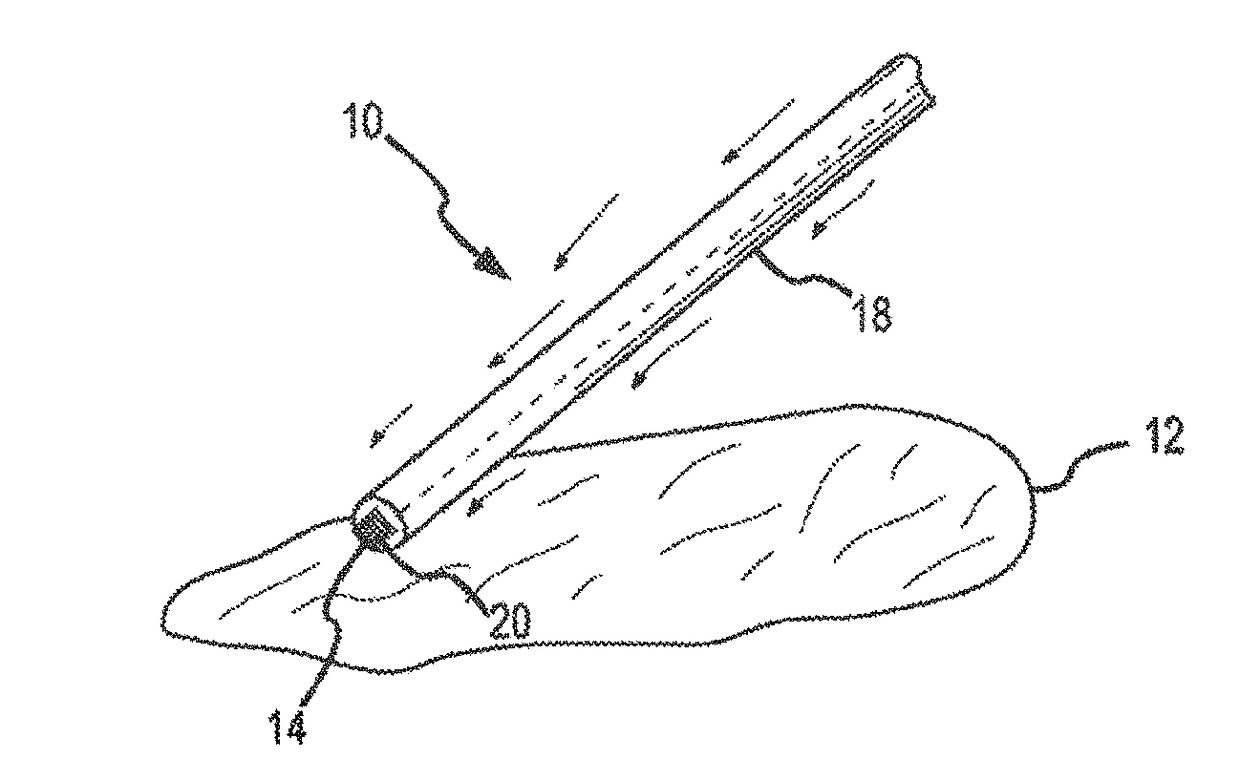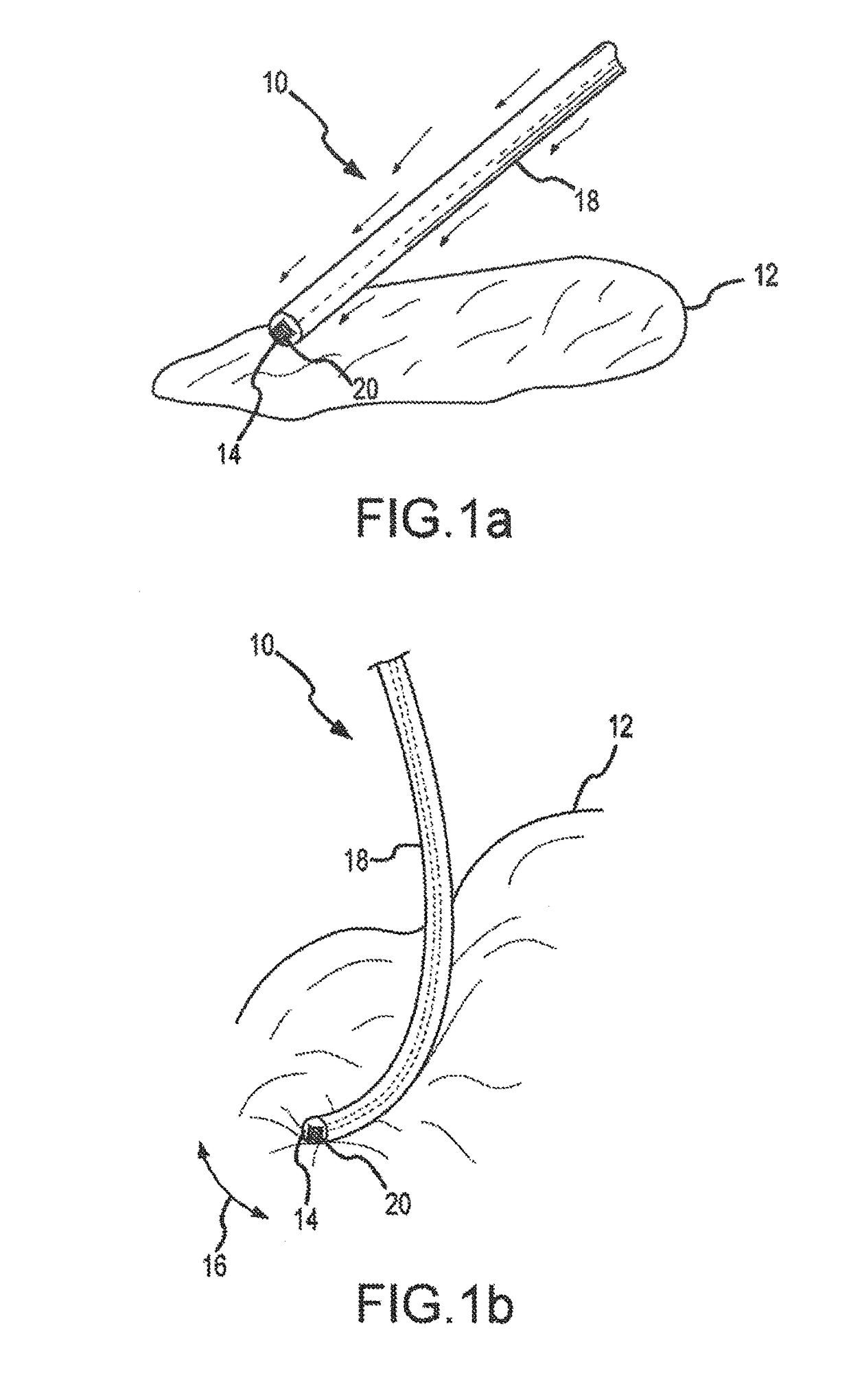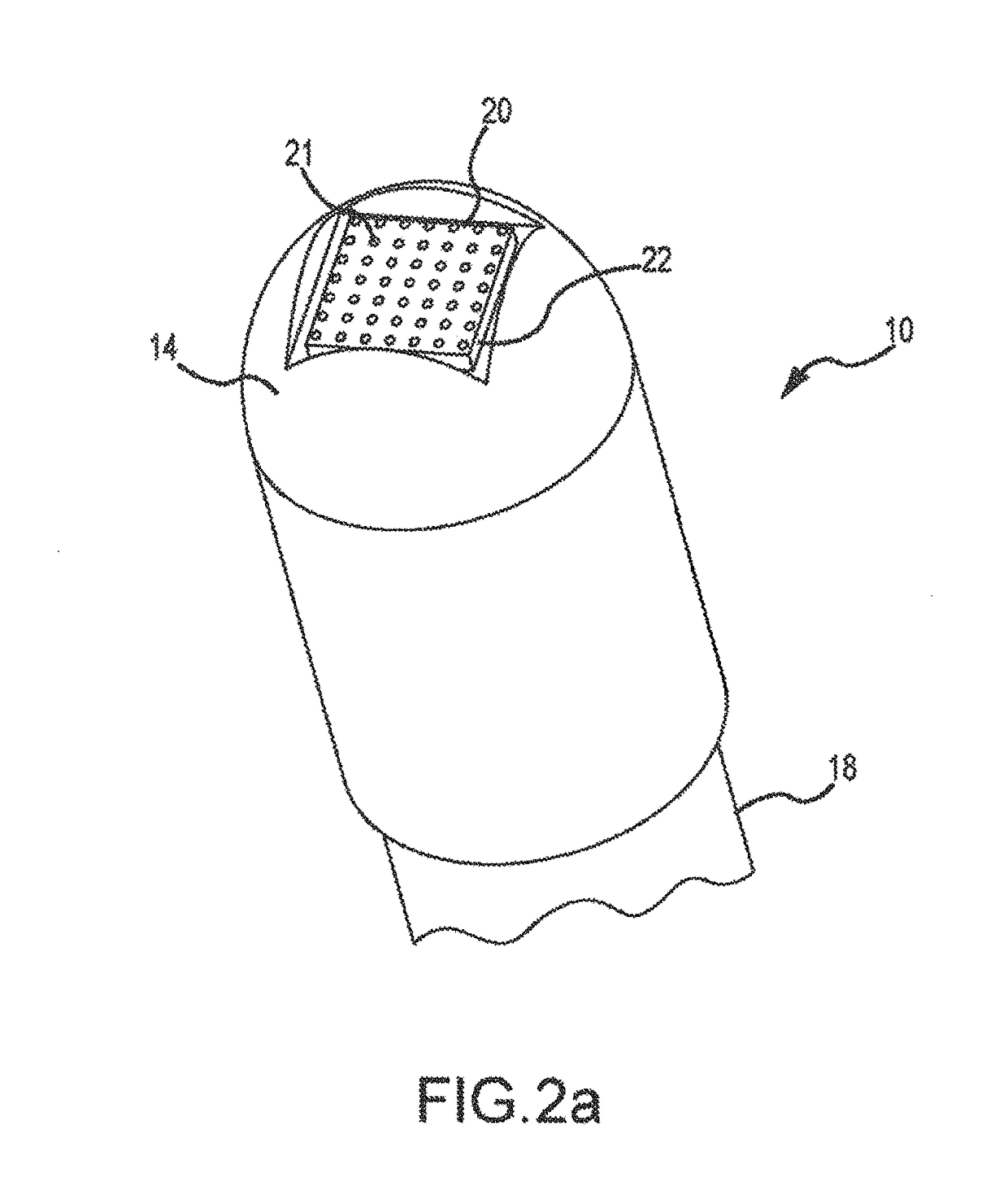Acoustic coupling for assessment and ablation procedures
a technology of acoustic coupling and ablation, which is applied in the field of catheters, can solve the problems of reducing the accuracy of the assessment, the assessment is not readily determined using conventional fluoroscopy techniques, and the difficulty of detecting the damage of the surrounding tissue, so as to reduce the damage to the surrounding tissue, reduce the contact pressure, and increase the contact pressure
- Summary
- Abstract
- Description
- Claims
- Application Information
AI Technical Summary
Benefits of technology
Problems solved by technology
Method used
Image
Examples
examples
[0100]The following are examples of other embodiments which are contemplated, and are provided for purposes of illustration, but are not intended to be limiting in any manner.
[0101]A method comprising: emitting acoustic signals from a catheter; receiving reflected acoustic signals at the catheter; and assessing a tissue based on the received acoustic signals.
[0102]The method, further comprising determining a level of contact between the catheter and the tissue based on the acoustic signals.
[0103]The method, further comprising reducing noise artifacts.
[0104]The method, further comprising simultaneously emitting and receiving the acoustic signals.
[0105]The method, further comprising alternating emitting and receiving the acoustic signals.
[0106]The method, further comprising generating a canceling effect of acoustic energy at a desired distance to reduce or eliminate damage to surrounding tissue or anatomical structures.
[0107]The method, further comprising assessing contact of the cath...
PUM
 Login to View More
Login to View More Abstract
Description
Claims
Application Information
 Login to View More
Login to View More - R&D
- Intellectual Property
- Life Sciences
- Materials
- Tech Scout
- Unparalleled Data Quality
- Higher Quality Content
- 60% Fewer Hallucinations
Browse by: Latest US Patents, China's latest patents, Technical Efficacy Thesaurus, Application Domain, Technology Topic, Popular Technical Reports.
© 2025 PatSnap. All rights reserved.Legal|Privacy policy|Modern Slavery Act Transparency Statement|Sitemap|About US| Contact US: help@patsnap.com



